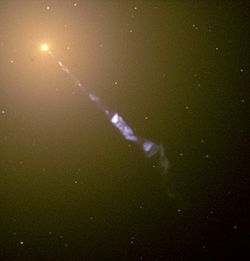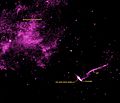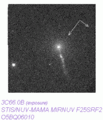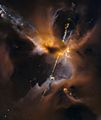Relativistic jet facts for kids
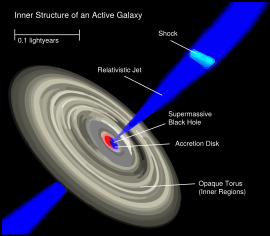
Relativistic jets are very powerful jets of plasma with speeds close to the speed of light. They are emitted by the central black holes of some active galaxies (notably radio galaxies and quasars), and by the black holes of massive stars and neutron stars. Their lengths can reach several thousand or even hundreds of thousands of light years.
If the jet speed is close to the speed of light, the effects of the special theory of relativity are significant. The mechanics behind how jets are created, and what they are made of, are still a matter of debate. Jet composition might vary.
Massive galactic central black holes have the most powerful jets. Similar jets on a much smaller scale develop from neutron stars and black holes in other stars. Even weaker and less relativistic jets may be associated with many binary star systems.
The general hypothesis among astrophysicists is that the formation of relativistic jets is the key to explaining the production of gamma-ray bursts. These jets have Lorentz factors of ~100 or greater (that is, speeds over roughly 0.99995c), making them some of the fastest celestial objects known at present.
Images for kids
-
Centaurus A in x-rays showing the relativistic jet
-
The M87 jet seen by the Very Large Array in radio frequency (the viewing field is larger and rotated with respect to the above image.)
-
Hubble Legacy Archive Near-UV image of the relativistic jet in 3C 66B


